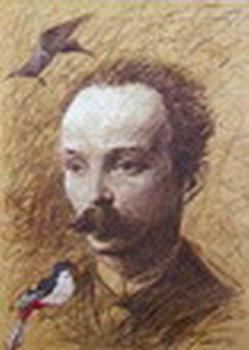José Marti drawings to be exposed
- Submitted by: admin
- Arts and Culture
- Paint and Sculpture
- 10 / 05 / 2007

The 140 anniversary of Jose Martis entrance to the Professional School of Painting and Sculpture San Alejandro of Havana, is commemorated in the Teacher's Native Home with the exhibition of 20 of his drawings on exposition-size reproduction with the use of modern digital techniques.
Simon Bolivar, car-cartoons, palms, prehispanic pieces, musical instruments and woman's face, Marti left evidence in his notebooks, not for exhibiting, but rather as a way of remembering things that interested him. This was explained by the designer Josep Trujillo Fonseca, promoter of what he qualified as small homage to the most universal of all Cubans.
Since he was an adolescent the great thinker showed interest for this art which as an adult he let flow when he studied or attended conferences. He also made several cartoons, one of the most representative identifies to the now Center of Marti Studies.
The Chac Moll drawn by the restless Cuban revolutionary coincided with the discovery of the original sculpture of this deity of the Mayan civilization. Its design later inspired painter Manuel G. Mancilla to take to the canvas his De Chac Mool a Marti which was sculpted in stone by the Cuban René Negrín.
On July 6, 1856 was founded the Professional School of Painting and Sculpture of Havana San Alejandro, promoted in principle by the famous French teacher Juan Bautista Vermay and the Economic Society Amigos del Pais. On September 15, 1867 the young Jose Julian got registered in the institution, where he remained for a brief time.
When speaking about the rescuing tasks of the Teacher's work, Trujillo Fonseca member of the Council of the Cultural Society highlighted the project Marti in Havana sponsored by that institution, the Native Home and the Lyceum of Guanabacoa and Regla.
For this task, he asserted have been compiled more than 200 pictures and its known of 70 sites related to the National Hero between 1853 and 1879, period in which he was in Cojimar, Cerro, Marianao and the points from where he departed in railroad to Pinar del Rio and Matanzas.
The idea is to link the current social environment with dates and places related with the life and work of Marti. To have children and adults remember him through gatherings, exhibitions.
Source: CubaSi
Comments